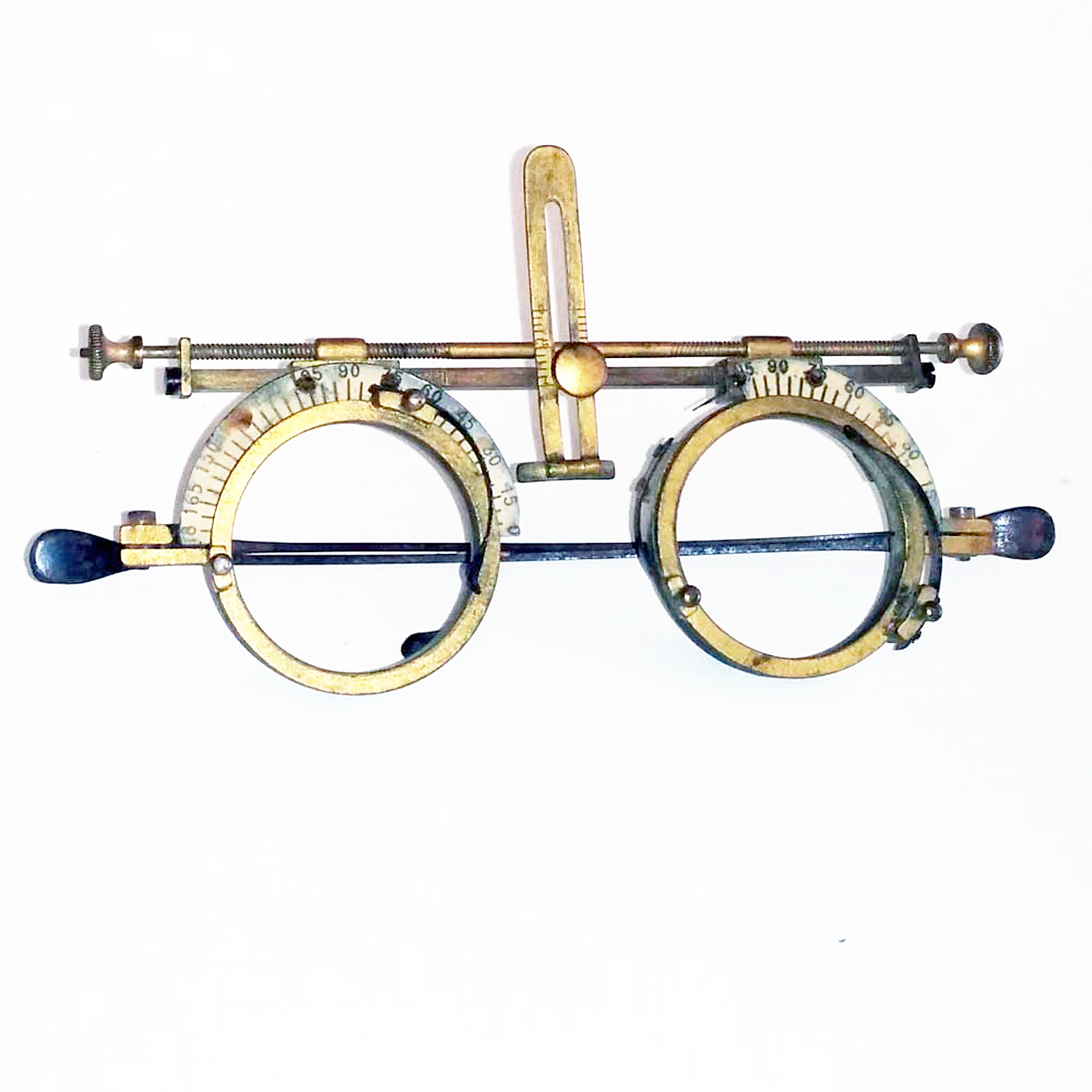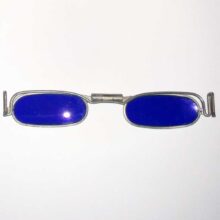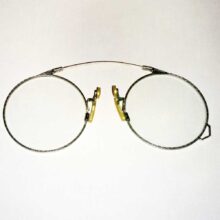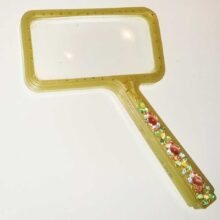Trial Frame of Burchard 1895
Trial frame of Burchard was from around 1895. It has room for a lens in front and one in the rear. The PD (interpupillary distance) is adjustable but only binocularly.
The very first trial lens frame first came along in the latter part of the 1800′s. It consisted of a lower half that could hold a loose lens. The loose lens was then held in place by a spring-like clip above. Over time this evolved to the ability to hold two lenses on the same side and the cylindric lens being able to be rotated.
This trial frame is in the style of Burchard from 1895. It consists of a brass frame with a spring clip in the rear to hold the spherical lens. In the front it has a spring clip to hold the cylinder lens. There are two rounded protrusions on the front to allow the examiner to rotate the cylinder axis to the desired degree setting. The degrees are marked off on the white arcuate parts on top of the front. In this example, the left arcuate part is missing from 105 to 180 degrees.
The long screw that controls the pupillary distance changes the lens separation on both sides at the same time. This is in contrast to today’s
trial frames which allow for one-sided pupil distance adjustments.
The temple pieces are the straight wire type common in the late 1800′s.





